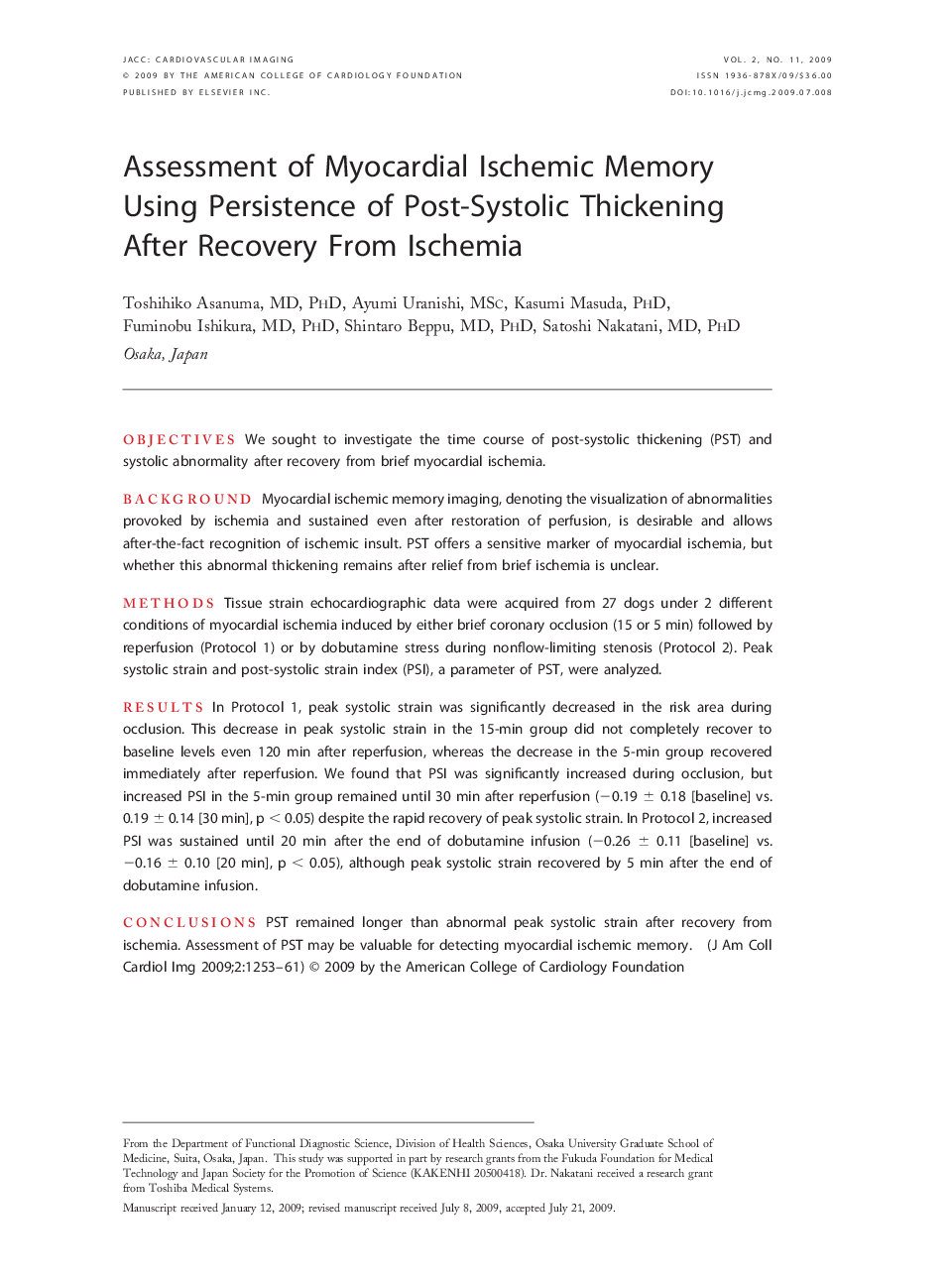| Article ID | Journal | Published Year | Pages | File Type |
|---|---|---|---|---|
| 2939070 | JACC: Cardiovascular Imaging | 2009 | 9 Pages |
ObjectivesWe sought to investigate the time course of post-systolic thickening (PST) and systolic abnormality after recovery from brief myocardial ischemia.BackgroundMyocardial ischemic memory imaging, denoting the visualization of abnormalities provoked by ischemia and sustained even after restoration of perfusion, is desirable and allows after-the-fact recognition of ischemic insult. PST offers a sensitive marker of myocardial ischemia, but whether this abnormal thickening remains after relief from brief ischemia is unclear.MethodsTissue strain echocardiographic data were acquired from 27 dogs under 2 different conditions of myocardial ischemia induced by either brief coronary occlusion (15 or 5 min) followed by reperfusion (Protocol 1) or by dobutamine stress during nonflow-limiting stenosis (Protocol 2). Peak systolic strain and post-systolic strain index (PSI), a parameter of PST, were analyzed.ResultsIn Protocol 1, peak systolic strain was significantly decreased in the risk area during occlusion. This decrease in peak systolic strain in the 15-min group did not completely recover to baseline levels even 120 min after reperfusion, whereas the decrease in the 5-min group recovered immediately after reperfusion. We found that PSI was significantly increased during occlusion, but increased PSI in the 5-min group remained until 30 min after reperfusion (−0.19 ± 0.18 [baseline] vs. 0.19 ± 0.14 [30 min], p < 0.05) despite the rapid recovery of peak systolic strain. In Protocol 2, increased PSI was sustained until 20 min after the end of dobutamine infusion (−0.26 ± 0.11 [baseline] vs. −0.16 ± 0.10 [20 min], p < 0.05), although peak systolic strain recovered by 5 min after the end of dobutamine infusion.ConclusionsPST remained longer than abnormal peak systolic strain after recovery from ischemia. Assessment of PST may be valuable for detecting myocardial ischemic memory.
